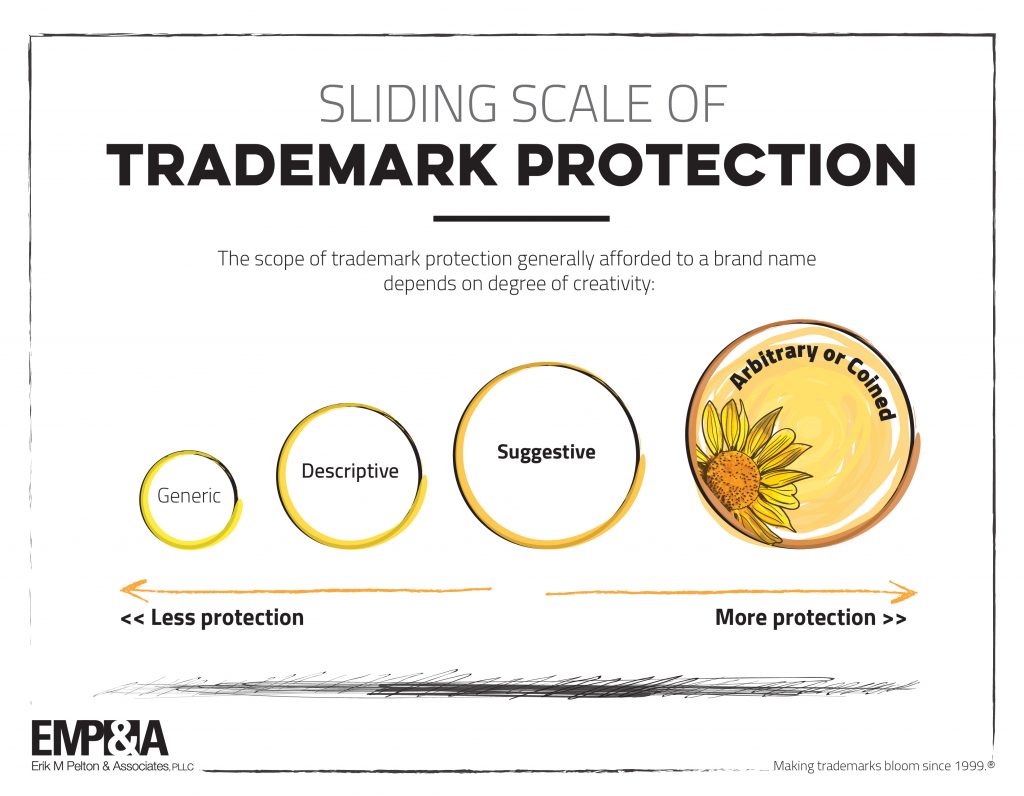Some brands (trademarks) are entitled to greater protection than others, it is a sliding scale. The type of brand name determines a lot about the registrability and scope of protection:

There are five basic types of marks. In descending order from those with the most protection to the least, they are:
Coined: completely new and made up terms, such as Exxon® for oil and gas, and Kodak® for film and cameras.
Arbitrary: not made up, but unrelated to the goods or services, such as Yahoo!® for internet services, and Apple® for use with computers.
Suggestive: words which relate to the goods or services, but are not descriptive of them, such as CAFE GELTATOHHH!® for restaurant services featuring gelato, EBEANSTALK® for online store services featuring developmental toys, and TUFFRAX® for ceiling-suspended shelves.
Descriptive: terms which can be used to refer to a product or service, or its functions or characteristics, such as Sports Illustrated® for sports magazine, and US PRO GOLF TOUR® for golf tournaments.
Generic: words which are commonly used to refer to a good or service, or answer the question “what is it?” (such as “Laptop” for a portable computer).
Coined, arbitrary and suggestive names are generally able to become registered trademarks, provided someone has not already registered a confusingly similar mark for a related product or service. Coined and arbitrary marks are given the ‘strongest’ protection and are thus the most desirable. Descriptive marks may sometimes be registered, but generally are afforded less protection. For this reason, descriptive marks are considered ‘weak.’ Generic trademarks are the weakest of all – they are entitled to little or no protection.
In my opinion, suggestive names or coined terms that are suggestive are generally the best — because they are entitled to good protection, creative, and tell the consumer something about your goods or services.





Pingback: The Sliding Scale of Trademark Protection | Erik M Pelton & Associates, PLLCErik M Pelton & Associates, PLLC